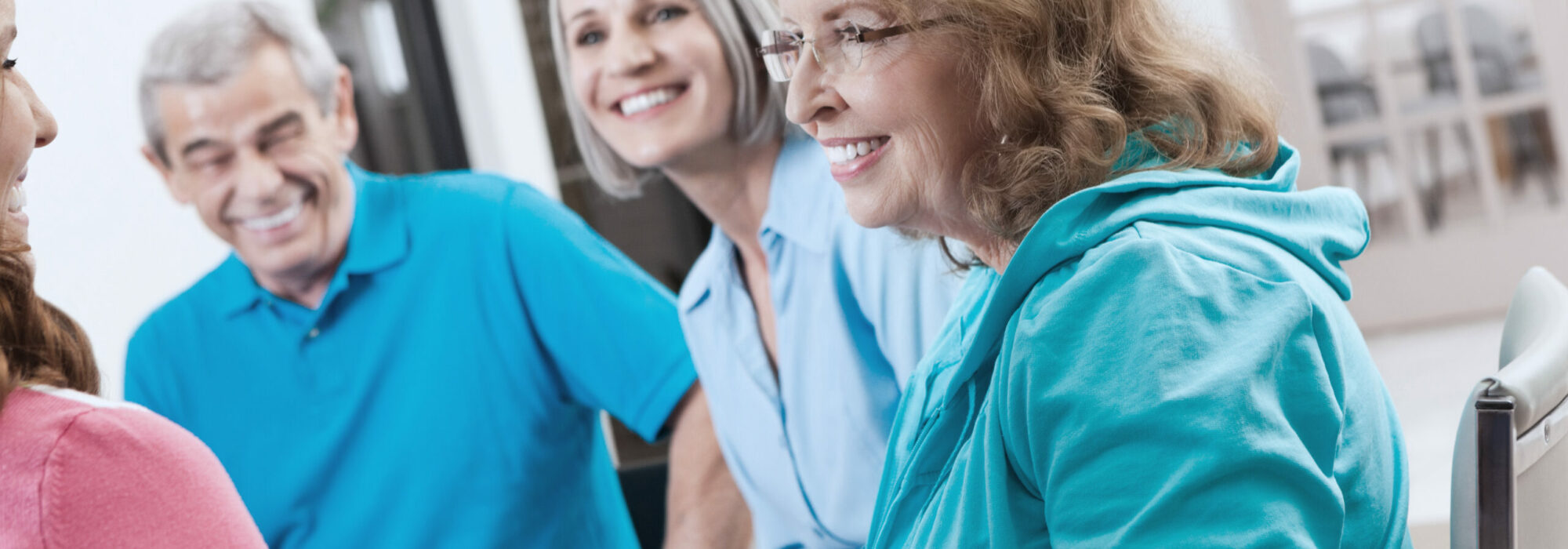
Active Communication Education program: Family-Centered Care in action
Bringing adults with hearing loss and their family members together to problem solve day-to-day communication is a brilliant way to provide family-centered hearing care.
In collaboration with colleagues in speech pathology at the University of Queensland, we have developed and evaluated a group program for adults with hearing loss and their families. The program is called ACE (Active Communication Education). Loads of references I could cite but to cut to the chase: it works and it is fun!!!!!
What do I mean by ‘works’? Well, we did the ultimate high-level evidence randomized controlled trial and ACE improves communication and quality of life for people with hearing loss and their families. Published in a top journal – Ear & Hearing.
But ACE not only works, it’s fun!
What do I mean by ‘fun’? People who attend ACE love it and people who deliver the program also love it. No lectures – just interactive discussion and exercises that everyone really gets into. Participants are learning a process skill, by which I mean they are learning HOW to problem solve communication challenges they face in everyday life. Participants answer questions like: Why can’t the person with hearing loss understand in this situation?…What’s the source of the problem?…What can be done to fix it? Solutions of course are likely to be found in a shared approach to the problem. For example, if a person with hearing loss can’t hear when a family member talks to them from another room there are a few possible solutions:
- Person with hearing loss moves closer to the family member
- Family member moves closer to the person with hearing loss
- Both people move a little bit until they are close enough to overcome the challenge!
The most important fact I can pass on about ACE to my fellow hearing care professionals is that whoever runs the program (could be an audiologist, a speech pathologist, a social worker, a nurse, etc.) needs to be a good facilitator. They do not give lectures or answer the questions for participants. They speak less rather than more and gently help people with hearing loss and families explore solutions and try them out in everyday life. You don’t need to worry if someone suggests a solution you don’t think is best or may not work, just say “Ok – please try this out before we meet again and tell us how it goes”.
More reasons why ACE works
ACE runs for 5 weeks – 2 hours per week – and participants are encouraged to attend all sessions. It is not a “drop in” kind of thing. The group forms a bond and that is an important element of why the program works. Families really connect and learn from each other. People with hearing loss really connect and learn from each other. In the first session, the facilitator helps the group determine what they will work on for the 4 weeks that follow. If you are worried about how to do this, please don’t, because we have a great step-by-step process that you follow as well as a video of an actual group working through that process.
ACE is available in English for free download at: https://shrs.uq.edu.au/active-communication-education-ace. This site also has videos showing examples of how to facilitate and run the program.
ACE has been translated into many languages – Spanish, Swedish, French, Portuguese, Korean, German – and has been used in many countries around the world.
Why don’t you download it and try it today? It may need some local modifications but otherwise all the work has been done for you. There are instructions, detailed plans for each session and handouts already prepared. Your patients and their families will thank you!!
